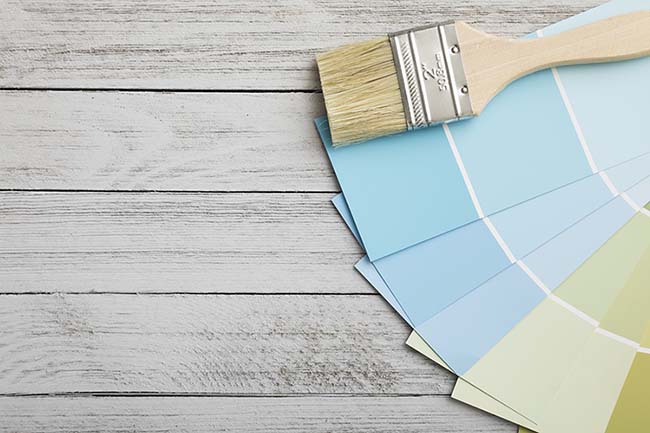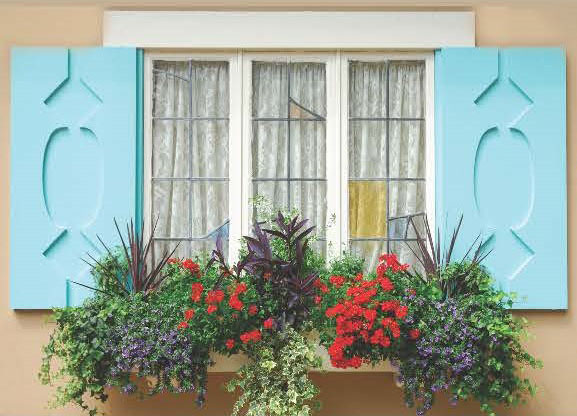Why You Should Wait Before Painting New Deck Wood
A fresh deck made from new wood can be a beautiful addition to your home, but painting it too soon can lead to disappointing results. While you might be eager to apply paint or stain to protect and beautify the wood, it’s important to wait. New wood, especially pressure-treated lumber commonly used for decks, must properly cure and settle before it can hold paint or stain effectively. Here’s why waiting is essential and how to determine when your new deck is ready for painting. Why You Need to Wait 1. Moisture Content in New Wood New Wood is Moist: Freshly cut or pressure-treated wood is typically saturated with moisture. This is especially true for pressure-treated lumber, treated with chemical preservatives to protect it from rot, insects, and decay. These chemicals are injected into the wood using high pressure, leaving it soaked with moisture when first installed. Why It Matters: If you paint new wood before it has had a chance to dry out, the moisture trapped inside the wood will prevent the paint from properly adhering to the surface. The moisture will try to escape as the wood dries, potentially causing the paint to blister, peel, or crack. This leads to premature paint failure, meaning you’ll have to repaint sooner than expected. 2. Wood Needs Time to Season Natural Drying Process: Beyond just the moisture from treatment, even untreated wood contains natural moisture that needs time to evaporate. As the wood dries, it will shrink slightly, expand, and contract with temperature changes. Why It Matters: Painting or staining the wood too early can lead to adhesion issues and uneven coverage. Allowing the wood to season or “cure” ensures the surface is stable, dry, and ready to hold paint or stain. 3. Prevents Surface Contamination Debris and Oils: New wood, particularly when it has just been cut or milled, may still have a layer of mill glaze—a shiny surface coating caused by the heat of the milling process. This glaze and any residual oils or debris from manufacturing or handling can prevent paint from properly bonding to the wood. Why It Matters: Over time, exposure to the elements naturally removes this mill glaze and cleanses the surface. Painting too soon, before this process happens, can lead to uneven finishes and poor paint adherence. How Long Should You Wait? 1. Type of Wood Matters Pressure-Treated Wood: The general recommendation for pressure-treated wood, which is commonly used for decking, is to wait at least 3 to 6 months before painting or staining. This allows time for the wood to dry out thoroughly and lose its excess moisture. Kiln-Dried or Pre-Treated Wood: If the wood was kiln-dried or pre-treated for painting, you may be able to paint sooner. Kiln-dried wood has been treated to remove moisture and may only need a few weeks to acclimate to outdoor conditions before painting. Untreated Wood: Untreated lumber, such as cedar or redwood, may only require a few months to dry out. However, always perform moisture tests before painting to ensure it’s fully dry. 2. Seasonal Factors Weather and Humidity: Local weather conditions can affect the drying process. The drying period may be extended if you live in a humid or rainy climate. Similarly, wood exposed to direct sunlight and warm temperatures will dry faster than wood installed in a shaded or cooler area. Rain Exposure: Let the deck dry completely after any rain before considering painting. Ideally, wait several days of dry weather to ensure no moisture is trapped in the wood. How to Test If Your Deck is Ready for Painting Before painting or staining your deck, testing the wood to ensure it’s dry enough to accept paint is essential. Here are a few methods to check: Water Test: Spritz a small amount of water onto the deck’s surface. The wood is still too wet for painting if the water beads up on the surface. If it soaks into the wood within a few seconds, it’s likely dry enough to paint. Moisture Meter: A moisture meter is a more precise way to check the wood’s readiness. The ideal moisture content for wood before painting should be between 12% and 15%. Moisture levels above this range indicate that the wood needs more time to dry. What Happens If You Paint Too Soon? If you’re tempted to paint your new deck before it’s ready, here are some of the issues you might encounter: Blistering and Peeling: Moisture trapped inside the wood will try to escape, pushing the paint off the surface. This results in blistering and peeling, which can ruin the appearance of your deck and require extensive repainting or stripping. Poor Adhesion: Paint applied to wood that hasn’t thoroughly dried will not adhere properly, leading to a patchy or uneven finish. You may notice areas where the paint doesn’t seem to stick, creating an inconsistent appearance. Cracking: As new wood expands and contracts with moisture changes, paint that hasn’t fully bonded can crack, leading to premature wear and the need for touch-ups or complete repainting. Conclusion: Patience Pays Off Painting or staining your new wood deck is an important step in protecting it from the elements and enhancing its appearance, but waiting until the wood is fully ready is crucial. Rushing the process can lead to peeling, cracking, and overall poor performance of the paint or stain. By giving the wood time to dry, shrink, and stabilize, you ensure that the paint or stain will adhere properly, providing long-lasting protection and beauty to your deck. Always test the wood’s moisture content and follow manufacturer recommendations to achieve the best results. In the end, patience will save you time, money, and frustration while also giving you a beautiful, durable deck finish.








